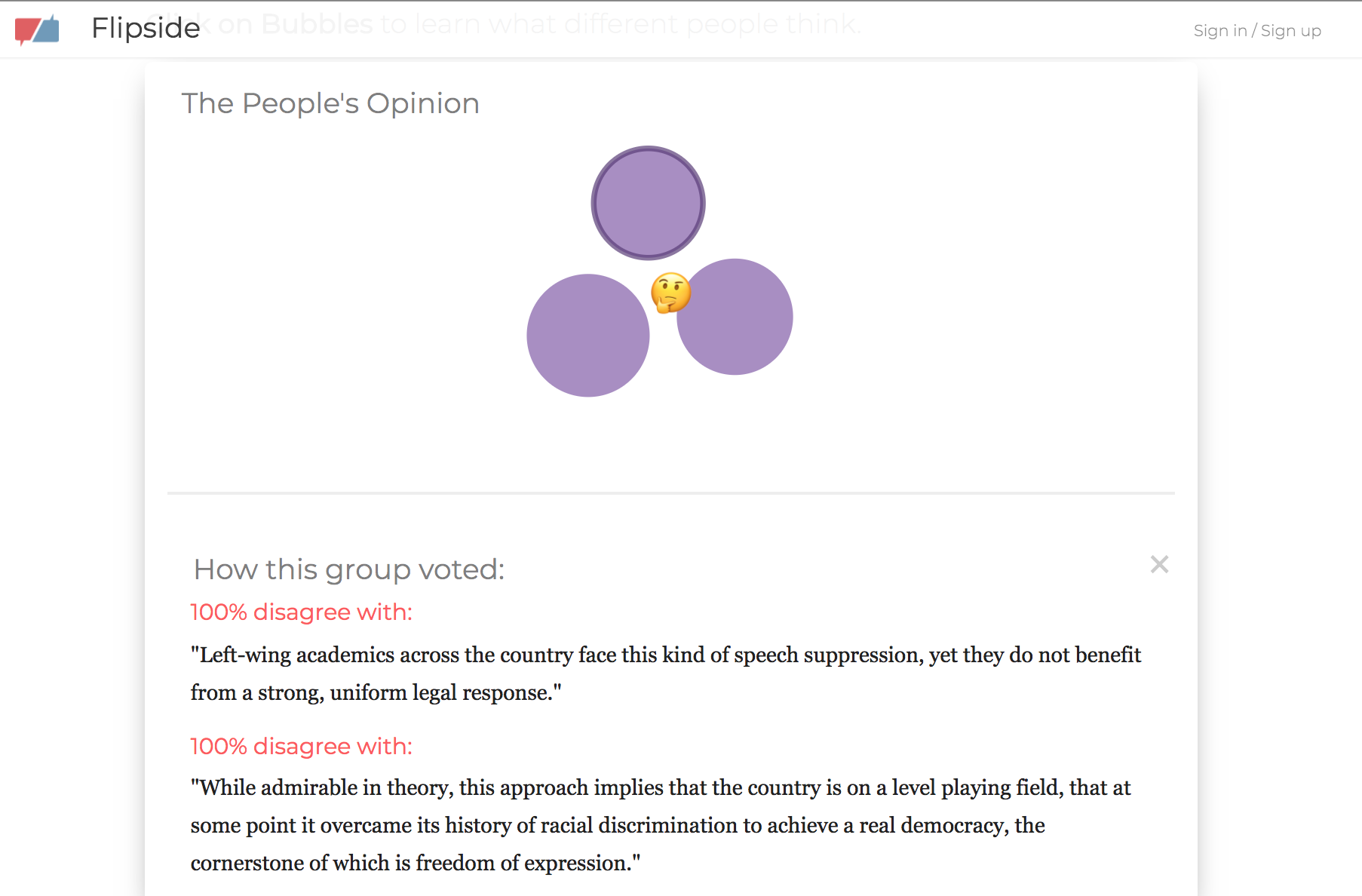Flipside Research
Published:
Code for my Flipside Research is in a Private Repo, but reach out if you’re interested, I can share it in some cases
Main Claim Detection Algorithm
I developed an algorithm that built on deep sentence representations, and combined extractive text summarization techniques with supervised subjectivity classification to identify the main opinions in a piece of persuasive writing. Traditional approaches that performed well in the literature of a Naive Bayes-Support Vector Machine only achieved 55% accuracy on this task, but my approach achieved 83% accuracy. In follow-up experiments examining the mistakes, I learned that this was because subjectivity in news and opinion requires more nuanced understanding than in product reviews where the literature evaluated on to perform well.
Automatic Live Clustering

Motivated by research on casual information visualization, we built an interactive visualization of the different sides of an issue, based on people’s votes on a particular claim. We combined a d3.js and vue.js front-end with regular HTTP requests to the backend to dynamically update this visualization as people voted. The methodology for the clustering went as follows:
- Construct Binary Agree/Disagree Votes Matrix
- Perform Dimension Reduction (PCA, metric and non-metric MDS)
- Perform Clustering on new representations (KMeans, MeanShift)
- Automatic tune Hyperparameters based on Sillhouette Score
- Construct Clustering Rationale using Statistical Feature Selection
Devil’s Advocate Recommendation System
Motivated by political psychology research on the effects of language, I developed a system that used perspective topic models combined with a recommendation system to recommend people opposing points of view tailored to them. This system was able to generalize accurate predictions of recommendations to new articles based solely on text.
- Used Perspective Topic Model to quantify different perspectives on various topics
- System able to unsupervisedly identify partisan slant for 87% of aricles
- Used in conjuction with my recommendation system
